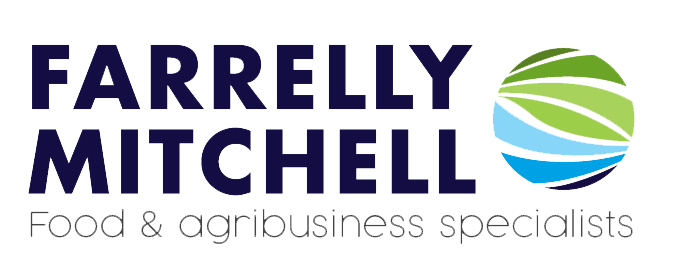Choosing an effective route to market strategy is crucial for food and agribusiness companies aiming to reach more customers and enter untapped markets. In fact, businesses with a well-defined route to market strategy often achieve up to a 5% higher market share compared to those without.
A well-optimised route to market strategy streamlines operations, aligns supply with demand, and reduces costs, allowing companies to increase customer satisfaction, profitability, and market share, frequently making the difference between stagnant sales and sustainable growth.
Beyond boosting sales, the route to market strategy itself can become a source of competitive advantage. Companies that excel in distribution can outperform competitors simply by being widely distributed. This in turn builds brand loyalty and makes it hard for competitors to displace them.
Understanding industry-specific and regional nuances
Route to market refers to the plan and channels a business uses to deliver goods from production to the end consumer. Designing a route to market strategy requires understanding both consumer behaviour and market segmentation. In the food and agribusiness sectors, markets are often highly segmented, so an effective route to market plan will often begin with research into who the customers are and how they make their purchases. By aligning channels to meet their customers’ needs, companies can maximise their reach and ensure their route to market strategy correlates with local demand.
Regional market structures and regulations play a significant role in shaping route to market decisions. Every region has its own regulations and infrastructure, which can either support or hinder route to market strategy. For instance, in mature markets with established networks, partnering with major retailers and third-party distributors is often the preferred choice, while in emerging markets, where distribution networks are typically more fragmented, a localised approach involving numerous smaller retailers and partners is often required.
Regulatory frameworks, including food safety laws, import/export restrictions, and local trade policies, can also dictate distribution methods. For instance, in the EU, stringent food safety regulations like the “General Food Law Regulation” require extensive traceability documentation, which can significantly impact distribution channels and processes. Ultimately, understanding and adapting to regional and industry-specific regulations is key to developing an effective route to market strategy.
Distribution network optimisation
Choosing the right distribution model is also crucial when developing a route to market strategy. Different models offer varying advantages depending on the scale, type, and geographic reach of the business. Selecting an appropriate distribution strategy can have significant cost and efficiency implications. In fact, a well-optimised distribution network can achieve 15% lower supply chain costs and 50% faster order-to-delivery cycles on average. It can also significantly impact customer satisfaction rates and competitive positioning. Broadly speaking, agribusiness distribution models fall into three categories: centralised, localised, and hybrid. In centralised distribution, a company ships all products from one or a few central warehouses. This can provide significant economies of scale and be efficient for smaller businesses or those with a limited range/territory to cover, as it simplifies management, but it may increase transportation distances and costs for more widely dispersed supply chains.
A localised model relies on smaller, regional facilities closer to end customers. This can reduce delivery times and enhance responsiveness, making it highly effective for perishable products as well as products with high turnover rates. Micro-fulfilment centres (MFC) are also playing their part in this. These compact, strategically located facilities allow distributors to prepare online orders quickly and dispatch them over short distances. By shortening the distance between the fulfilment point and the customer, MFCs can help shrink delivery times from days to hours while also lowering costs.
A hybrid approach combines centralised and localised methods to balance cost-efficiency with market agility and is particularly suited for businesses with diverse product ranges as well as varied or segmented markets.
Reducing unnecessary intermediaries in the network is generally considered good practice. If a company can ship more directly to retailers and skip layers of wholesalers and distributors, it can save on margins and time, though managing this feat can be challenging. Cutting intermediaries only works if the company can still cover the market effectively. Naturally, the optimal strategy is to minimise the number of handlers while ensuring full market coverage.
Common distribution channels
Food and agribusinesses can reach customers through a variety of distribution channels, including retail stores, online marketplaces, specialty food retailers, wholesale distributors, food service providers, and institutional buyers. Choosing the right mix of channels is key. Increasingly, the trend is towards omnichannel strategies. This typically involves integrating multiple distribution channels – such as combining traditional retail, e-commerce platforms, wholesale distributors, and food service distribution – under a unified distribution strategy.
By utilising multiple channels at once, companies provide customers with a seamless and flexible purchasing experience, which can significantly enhance both reach and customer loyalty. However, managing an omnichannel approach requires careful and precise integration of inventory, logistics, and customer relationship management (CRM) systems, as well as pricing and marketing strategies.
Logistics too must be meticulously planned and executed. The perishable nature of most food produce means suppliers are against the clock. Timing is critical, and so choosing the right transportation and storage methods is key to moving products quickly, safely, and cost-effectively through the supply chain.
Once the appropriate distribution channels have been chosen, the most pressing challenge is often synchronising supply chain operations and minimising waste. An effective route to market strategy also must be supported by robust logistics and supply chain operations. This usually requires meticulous coordination and optimisation of logistics planning and scheduling.
In particular, efficient warehousing, transportation, and inventory management systems are essential to ensure seamless product movement from producer to consumer. Cold chain logistics and real-time inventory management systems are often deployed as suppliers try to ensure there is enough produced to meet demand without overstocking.
However, costs can be prohibitive, with suppliers needing to invest in refrigerated transport, cold storage warehouses, and monitoring systems. This can run into millions of dollars for large-scale operations. It is also worth noting that a cold chain is not just about quality but also compliance, as many countries have stringent regulations that require documentary evidence of proper temperature control for food shipments.
At the macro level, general transportation infrastructure can also play a significant role. For agribusinesses, products frequently originate in remote locations and need to travel considerable distances to reach urban markets. Poor rail, road, and shipping infrastructure can be a major bottleneck, dramatically impacting both market access and the economic viability of an agribusiness operation. For example, ~30% of agricultural produce in regions like Africa and Asia is lost post-harvest, due in large part to inadequate infrastructure.
Impact of technology and digital enablement
In practice, optimising distribution is an ongoing process, with companies continually assessing whether their current route to market setup is optimal. This has led numerous food and agribusiness companies to embrace new technologies capable of cutting costs and delays and unlocking new ways to reach consumers.
Automation and data-driven management are making distribution smarter, faster, and more efficient. Businesses are now capable of collecting vast data on sales, customer locations, buying patterns, and even weather. This information can be analysed and integrated into distribution plans. For example, AI-powered demand forecasting can predict how much of a given product is likely to sell in each region, helping suppliers to ensure the right amount of stock is sent to each warehouse or store.
At the same time, more automated warehouse management systems can process orders faster and more accurately, reducing both labour costs and errors. Another aspect of digital enablement is the rise of online platforms and direct digital channels. Many agribusinesses now utilise online marketplaces or B2B platforms to reach buyers. These platforms often provide additional services like quality assurance or logistics support.
At a retail and food service level, the rise of food subscription services, grocery delivery apps, and digital ordering platforms has led to the creation of consumer-centric systems that can rapidly adapt to changing market demands and consumer preferences. Digital platforms now offer unprecedented convenience, allowing consumers to order a wide range of food products directly to their homes. This has played a crucial role in reshaping food service and retail industry practices by providing these businesses with real-time data analytics, personalised marketing capabilities, and advanced inventory management solutions.
Forge ahead with Farrelly Mitchell
Choosing the right route to market strategy is not just about selecting channels or logistical setup; it is about continuously adapting and refining processes to respond to changing market dynamics, technological advancements, and consumer expectations.
A thoughtfully crafted and well-executed route to market strategy positions food and agribusinesses to not only meet current market demands but also anticipate future shifts, securing long-term competitive advantages. Ultimately, companies that invest strategically and leverage data and digital technologies to their fullest will be best placed to improve their reach and profitability.
Farrelly Micthell’s market entry, supply chain optimisation, regulatory guidance, and strategy services can help your business navigate complex market environments with confidence.
Our market entry specialists conduct thorough market analysis and intelligence-gathering to help you better understand local market dynamics, distribution channels, and consumer preferences. Armed with these insights, we can provide tailored plans and solutions that reflect your business’ specific goals. We work with food producers to develop customised market entry plans, identify reliable partners, ensure regulatory compliance, and refine their products and value propositions to meet the tastes and expectations of local consumers. To discover how we can help build the right route to market strategy for your organisation, contact us today.














